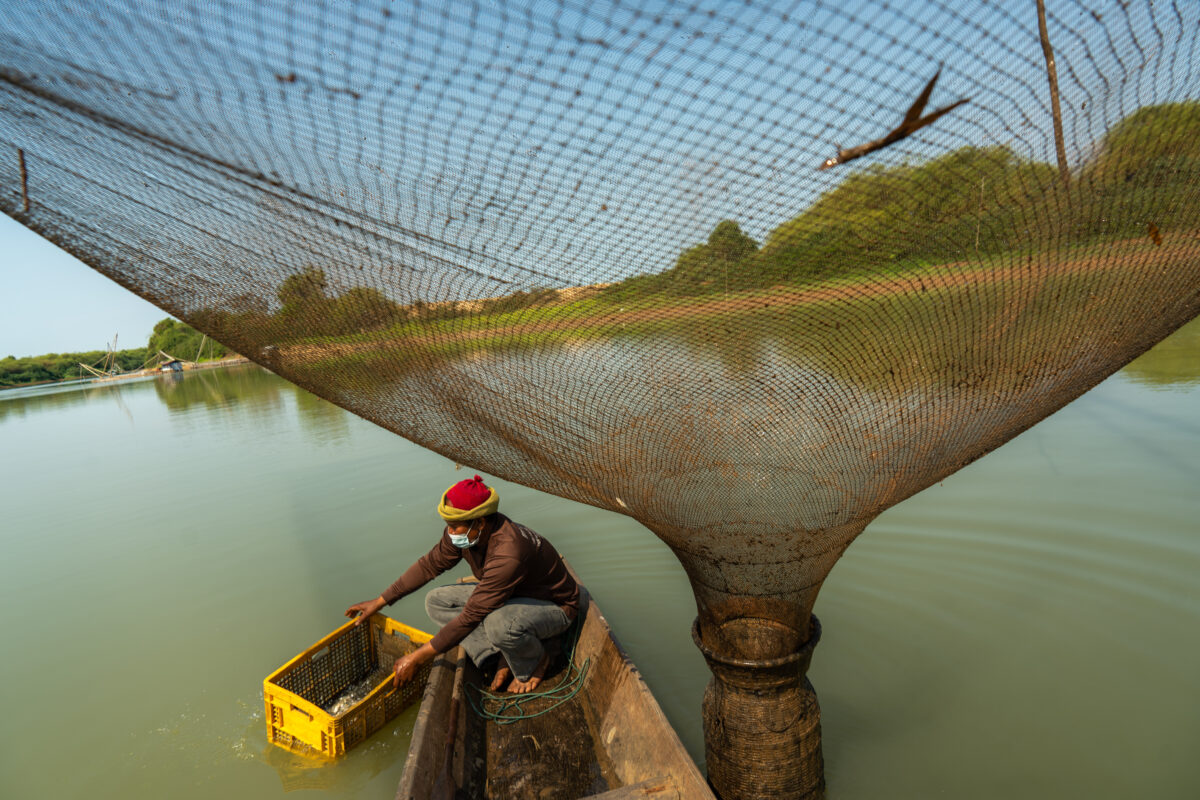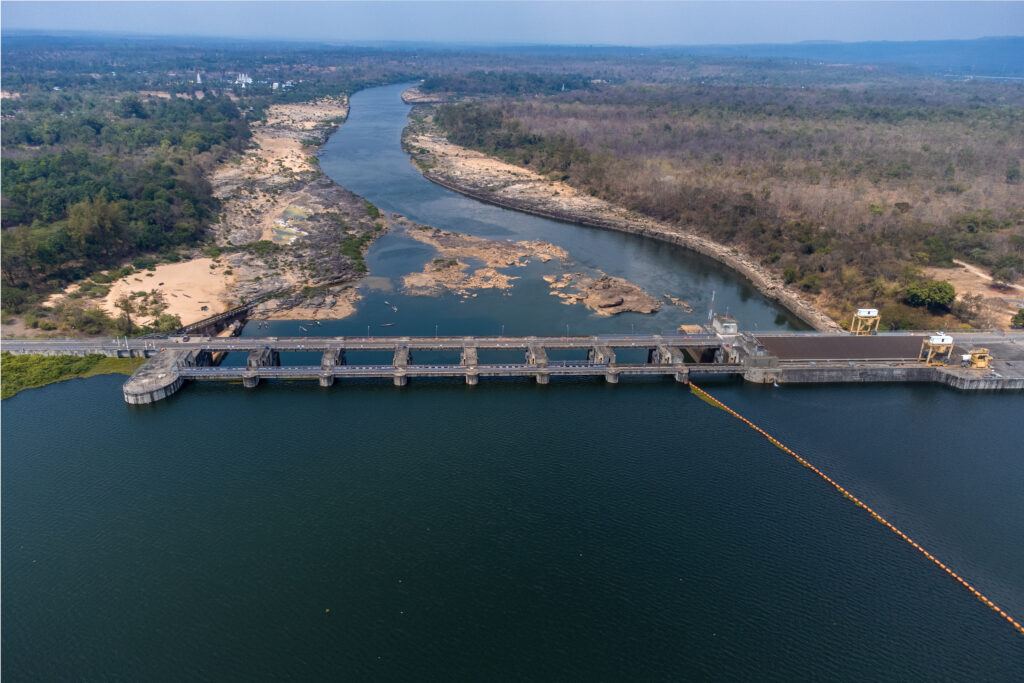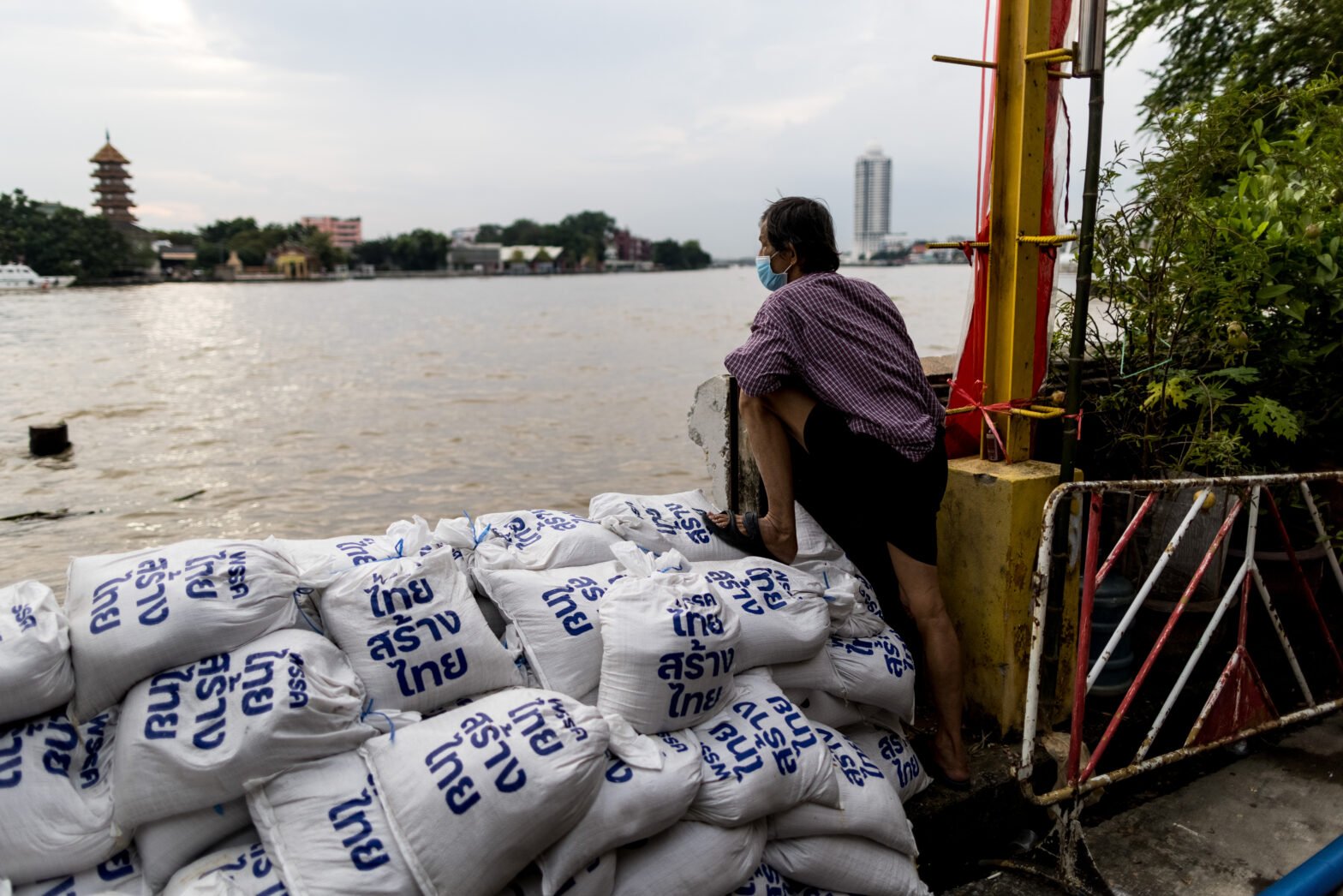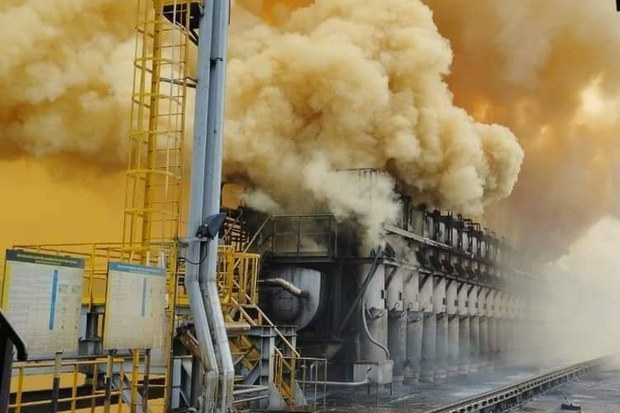NAKHON PHANOM, THAILAND ― Fish numbers have plummeted in tributaries of the Mekong River, and local communities in Thailand have linked the declining numbers of fish to the mainstream dams built on Asia’s biggest river.
The changes have caused alarm in communities along the Songkhram River, one of the major tributaries of the Mekong River in Thailand’s northeastern Nakhon Phanom province.
Wichit Phonglad, 73, has spent most of his life fishing in the Songkhram River. Due to his abundant knowledge of fish species, he was named the sage of Ban Samphong, an old community on the bank of the river.
But his knowledge of fish in the river has become irrelevant after some species vanished – now they only live on in his memory.
“Fish are now harder to find,” said Wichit. “Many fish species have completely disappeared from the river and we can no longer sustain our livelihoods by fishing.”
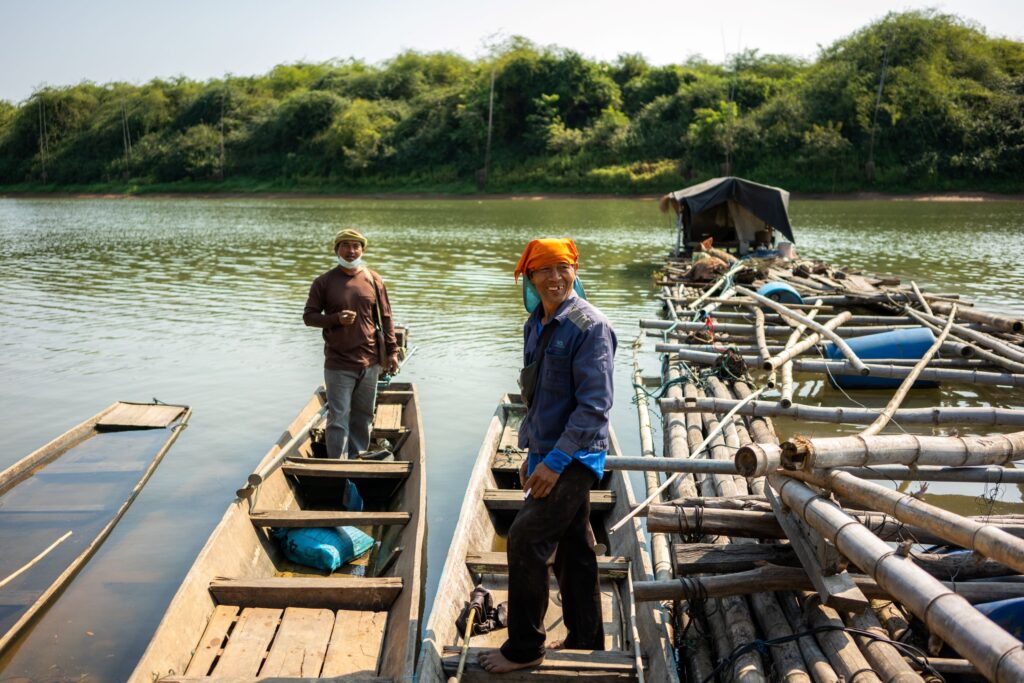
According to local records, 25 species of fish were previously found in the river, but many have not been seen in fishing nets in the past few years.
The fish disappeared after the Xayaburi hydropower dam in Laos started operating on the mainstream Mekong River in 2019 ― 600 kilometers north of Wichit’s village.
Since then, he and other villagers have noticed the irregular flow of water in the Songkhram River.
Under normal conditions, the river floods its surrounding areas from June to October each year, bringing a muddy-brown tide from the Mekong River into the Songkhram River and inundating the low-lying floodplain and riverine forests.
The inundated areas were then transformed into the perfect spawning ground for migratory fish from the Mekong River and the area became a nursery for their juveniles.
The lives of the people living along the Songkhram River were determined by this annual flooding, as it ensured the availability of fish stocks and incomes from fishing.
In the past few years, however, the Songkhram River has not had its seasonal floods. But it sometimes floods out of season.
“Before the Xayaburi Dam opened, we had already experienced minor changes in the river flow after dams were built in China. But the changes were significant after the Xayaburi Dam – which is much closer to Thailand – started operating,” said Wichit.
“Our observations convince us that the dams do not only cause an unnatural flow and extreme fluctuations of the water level in the Mekong River, but also extend into the Mekong’s tributaries. This makes the Songkhram River become unpredictable.”
Designated Ramsar site
According to the World Wildlife Fund (WWF), the Songkhram River is one of the most important wetlands in the Mekong Region. It is among the last tributaries of the Mekong River in Thailand that fish can migrate to and can freely breed and reproduce.
The river also hosts large patches of riverine forestlands, locally called Pa Tam, which provide habitats for diverse plant and wildlife species that revolve around the seasonal flood cycle. Many of these are rare endemic species that cannot be found elsewhere.
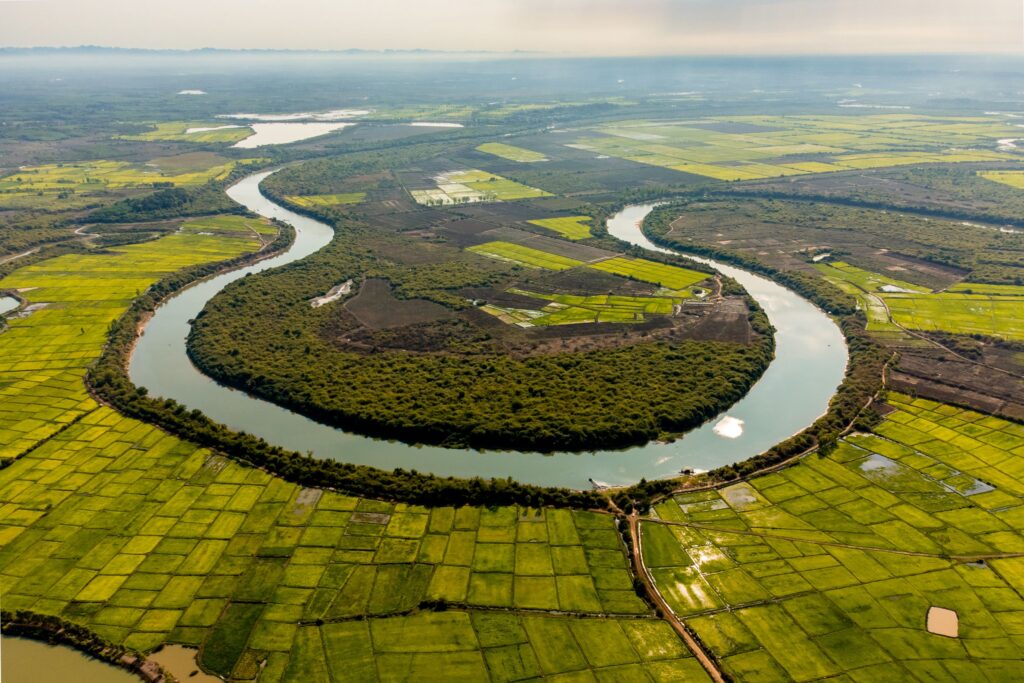

Because of its ecological significance, in May 2019 about 5,500 hectares of the Lower Songkhram River Basin in Tha Uthen and Sri Songkhram districts of Nakhon Phanom province was designated a Ramsar Site – under a United Nations’ treaty to promote conservation and the wise use of wetlands worldwide.
The river retains 192 fish species. Of these, 15 are considered species that require attention, according to a report submitted to the Ramsar Sites Information Service by WWF Thailand. Three are evaluated to be critically endangered on the International Union for Conservation of Nature’s (IUCN) Red List.
The absence of the seasonal flood and the unnatural fluctuation of the river are interrupting the reproductive cycle of these species and degrading the wetland ecosystems.
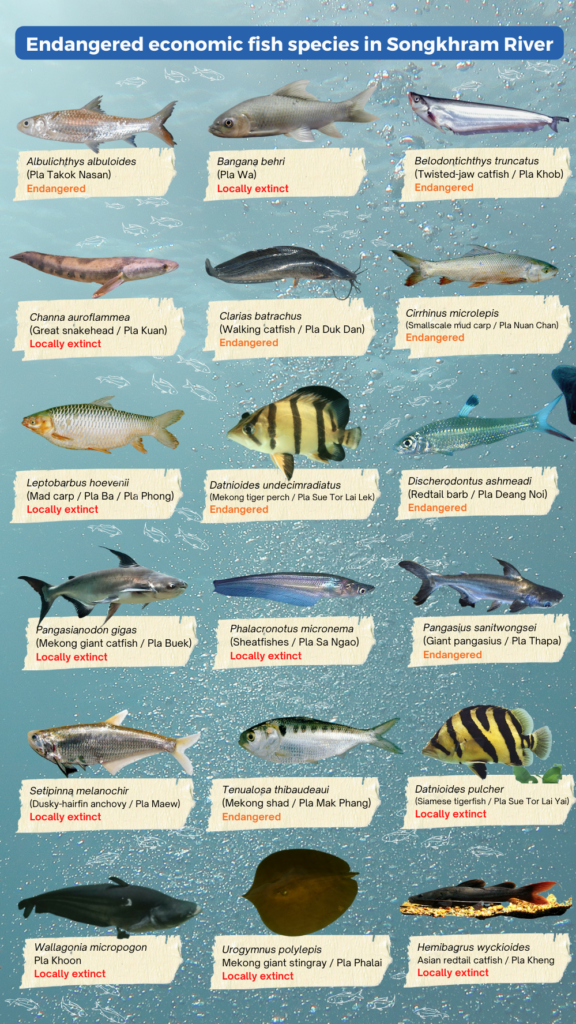
Damming the river
Along with the challenges associated with mainstream Mekong dams, the Songkhram River has also been allocated two water-gate projects that would dam the river.
Spearheaded by the Office of the National Water Resources (ONWR), the Thai government agency tasked with finding ways to manage water sustainably, the projects aim to prevent drought and mitigate chronic flooding in low-lying areas of the Songkhram River Basin.
The first water-gate project would be built over the middle section of the river in Sakon Nakhon province to store up to 74 million cubic meters of water for irrigation. The second is planned over the mouth of the river in Nakhon Phanom province to manage the flow between the Songkhram River and the mainstream Mekong.
Both projects are now in the feasibility study stage.
However, the Royal Irrigation Department is constructing another two water-gates on tributaries of the Songkhram River in Sakon Nakhon province, according to a report in Thai business publication Krungthep Turakij. Both are expected to be completed by 2023.
“People throughout the Mekong River and Songkhram River Basin are suffering direct impacts from dams,” said Amnart Trichak, chairman of the Network of Community Organization Council of Seven Northeastern Provinces in the Mekong Basin.
“Instead of turning their attention toward mitigating the environmental issues from such projects, the authorities instead come out with more large-scale impactful projects.”
Thailand’s rich freshwater biodiversity under threat
The Thai government has taken efforts to tackle climate change by building a large number of water retention projects. But they could threaten the country’s freshwater biodiversity.
Damming the Songkhram River required riverbed dredging that would devastate fish habitats. It would also inundate forests on both sides of the river and in the areas of the Lower Songkhram River Ramsar Site.
The dredging was proposed by the Marine Department without public consultation, and local people only learned about it early this year, said Amnart.
Poorer water quality
It is not only hydrological changes that contribute to declining fish stocks. Local fishermen also noticed the Songkhram River’s water quality had been getting poorer in recent years.
Kham Neelakul, a fisherman at Ban Samphong, linked this change to the expansion of sugar cane plantations in the areas upstream of the river.
“They use herbicides and pesticides heavily. These hazardous agrochemicals are finally washed down to the river,” he said, adding that sewage from growing communities along the river was also part of the problem.
Local fishermen have recently been catching more and more non-native fish, notably suckermouth catfish (Hypostomus plecostomus), a species originally from South America that is now spreading fast throughout freshwater habitats all over Thailand.
“The people are not familiar with this kind of fish,” says Kham. “We do not consume it, so they are valueless.”
As the river can no longer provide reliable fish resources for people, due to mounting environmental pressures, Kham says local people have switched their main economic activity to agriculture or have left to find work elsewhere.
“We can only catch small fish right now from the river, as the large fish are largely gone,” he said.
“On a lucky day, I may earn between 2,000 and 3,000 baht from the catch, but mostly I get only about 200 to 300 baht, which is barely worth it for the fuel and effort.”
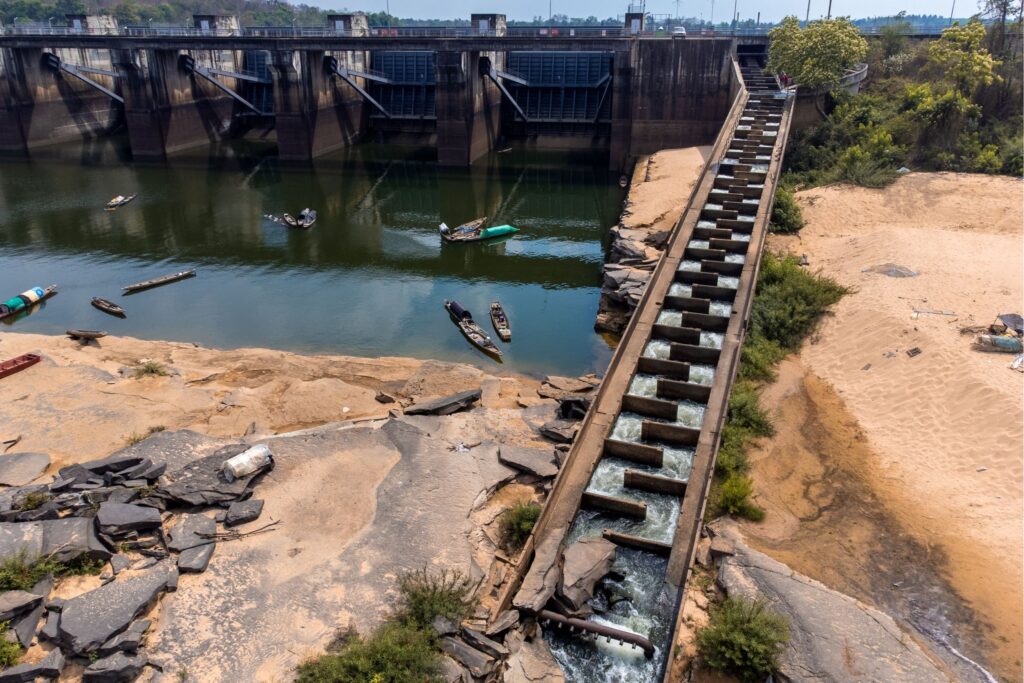

Adverse impact
Despite local critics, Phirun Saiyasitpanich, the secretary-general at the Office of Natural Resources and Environmental Policy and Planning (ONEP), insisted that the government had not neglected the problem of freshwater biodiversity degradation.
ONEP is the official agency directly responsible for biodiversity conservation, including ensuring the proper management and protection of ecosystems in accordance with the Ramsar Convention.
Phirun said Thailand had an Environmental Impact Assessment (EIA) mechanism overseen by ONEP. Every project that meets the criteria for conducting an EIA must study the project’s adverse environmental impacts and propose a mitigation plan.
Unless an EIA report demonstrates proper mitigation measures or adjustments to lessen the project’s negative environmental impacts, ONEP will reject the report and require further revisions.
“ONEP is trying to cooperate with other related agencies to ensure that their new development projects will consider the environmental aspects and have minimum adverse impacts on the ecosystems,” he said.
But Wichit, the retired fisherman who has seen the Songkhram River’s rapid changes, believes more action is needed beyond the EIA mechanism.
“We must also stop building more dams on the Mekong River and its tributaries and shift the focus to conserving our unique ecosystems,” he said.
“It is clear that the dams do more harm than good.”
This story was produced under the Biodiversity Story Grant supported by the Internews’ Earth Journalism Network.
All photographs were taken by Visarut Sankham, a visual storyteller and documentary photographer based in Chiang Mai, Thailand.


